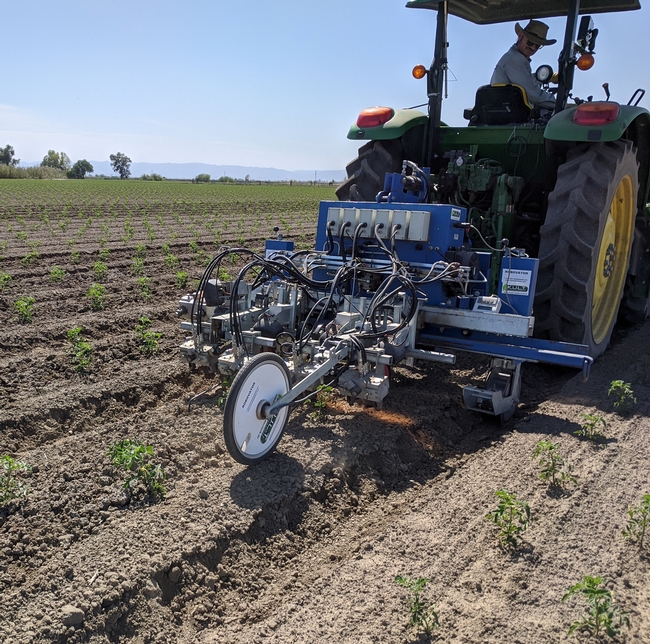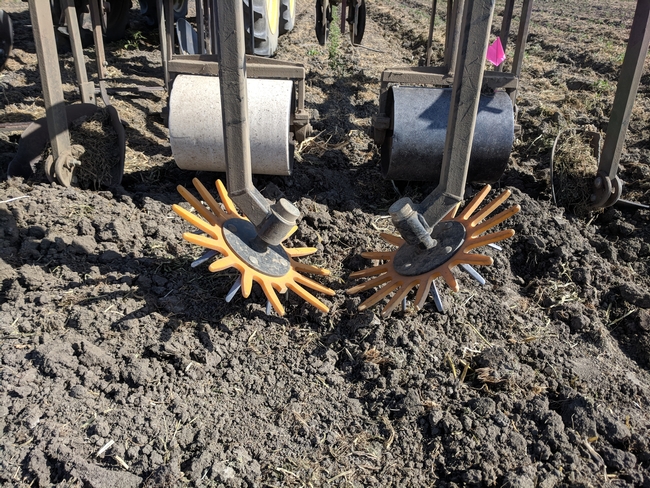During the 2020 season, I conducted a trial comparing the mechanical finger weeder to the automated Robovator with funding from the California Tomato Research Institute. My trial was located in Colusa County and CE Advisor Scott Stoddard conducted a similar trial in Merced County. Our main objective was to evaluate weed control, time, and costs associated with using mechanical cultivators as part of a conventional weed management program in processing tomatoes.
The four treatments in Colusa County consisted of:
- Grower standard practice: rimsulfuron application ~3 weeks post-transplanting
- Finger weeder mechanical cultivator in-row ~5 weeks post-transplanting
- Robovator robotic cultivator in-row ~4 weeks post-transplanting
- Control: No rimsulfuron and no in-row cultivation
The entire field, including trial plots, received a pre-plant application of S-metolachlor/trifluralin and diazinon, standard cultivation to remove weeds outside of plant row, S-metolachlor/trifluralin lay-by (5 weeks post-transplant), and a finger weeder pass 8 weeks post-transplant (in addition to the finger weeder pass from Treatment 2). Plant stands were assessed before and after cultivator passes. Weeds were counted before treatment, 24 hours, 2 weeks and 4 weeks after treatment in the center bed of each plot. Weeds were also counted before and after hand-weeding. A subsample of plants from each plot were hand-harvested and sorted for red, green and culled fruit. A subset of red fruit from each plot was submitted to a PTAB grading station for pH, SS and color. Data analysis is ongoing and cost associated with operations is being collected.
Field variation and weed species influenced weed control and pressure, and impacted plot yields in Colusa field. There was poor bindweed control from cultivators and hand-weeding crews. Both in-row cultivators provided long-term control, especially 4 weeks post cultivator pass. The finger weeder was able to cover 5 beds and moved quickly through the field compared to the Robovator, which only covered 1 bed at a time. Weeds present in the field included nightshades, bindweed, lambsquarter, pigweed, thistle, and thorn apple.
Steve Fennimore, UCCE Weed Specialist, provided the Robovator and the finger weeder was a 2020 purchase by the grower cooperators. There is growing interest in Sutter and Colusa counties for the finger weeder, and many growers are purchasing custom implements for their operations.
The final report and analysis will be completed by the end of 2020 and sent out in the Colusa, Sutter-Yuba Vegetable Crops Newsletter. You can subscribe here.

